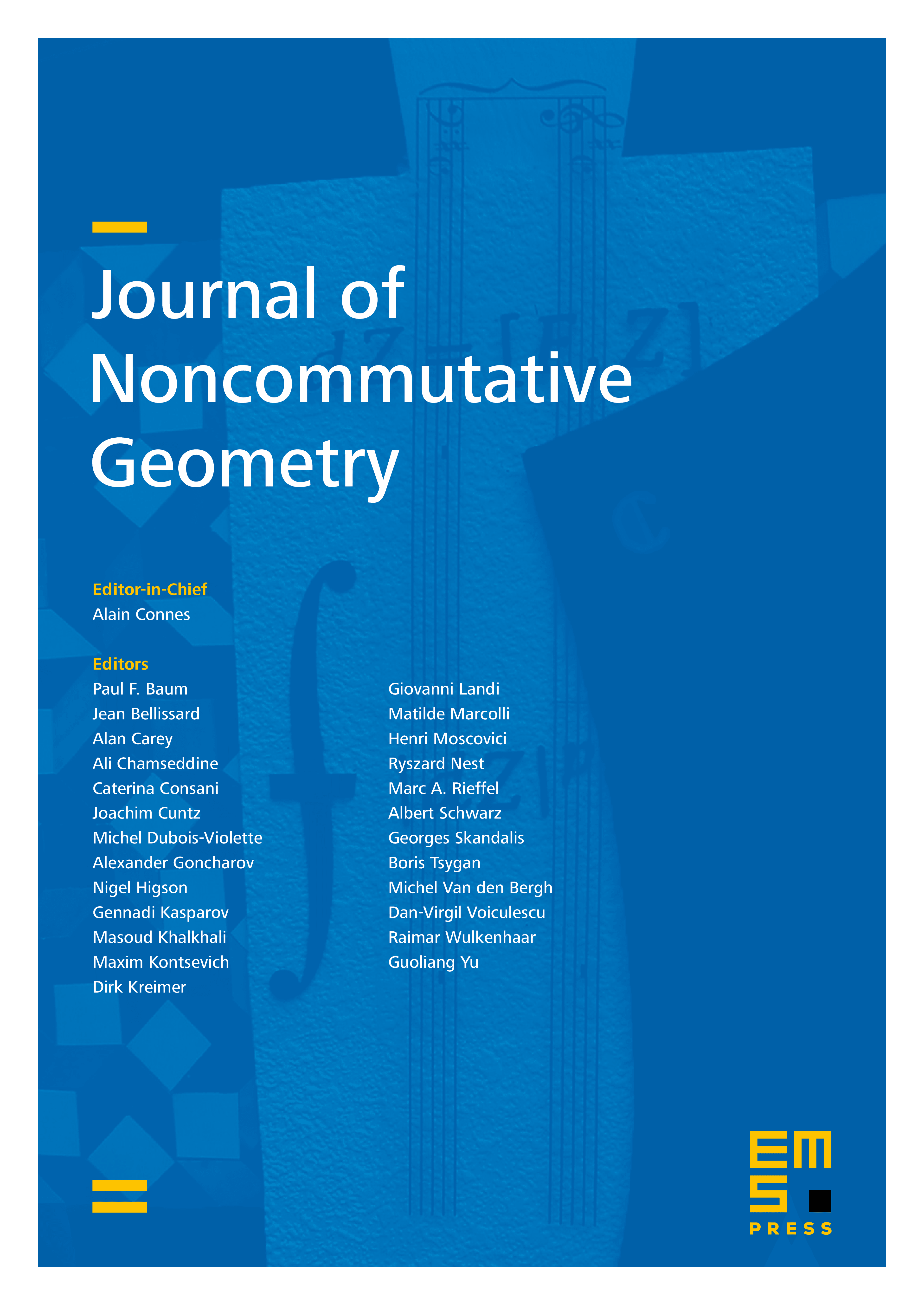Periodicity and cyclic homology. Para--modules and perturbation lemmas
Raphaël Ponge
Seoul National University, Republic of Korea and Sichuan University, Chengdu, China

Abstract
In this paper, we introduce a paracyclic version of -modules. These new objects are called para--modules. Paracyclic modules and parachain complexes give rise to para--modules much in the same way as cyclic modules and mixed complexes give rise to -modules. More generally, para--modules provide us with a natural framework to get analogues for paracyclic modules and parachain complexes of various constructions and equivalence results for cyclic modules or mixed complexes. The datum of a para--module does not provide us with a chain complex, and so notions of homology and quasi-isomorphisms do not make sense. However, chain maps and chain homotopies continue to make sense, and so by equivalences we actually mean chain homotopy equivalences. We establish some generalizations for para--modules and parachain complexes of the basic perturbation lemma of differential homological algebra. These generalizations provide us with general recipes for converting deformation retracts of Hochschild chain complexes into deformation retracts of para--modules. By using ideas of Kassel this then allows us to get comparison results between the various para--modules associated with para-precyclic modules, and between them and Connes’ cyclic chain complex. These comparison results lead us to alternative descriptions of Connes’ periodicity operator. This has some applications in periodic cyclic homology. We also describe the counterparts of these results in cyclic cohomology. In particular, we obtain an explicit way to convert a periodic -cocycle into a cohomologous periodic cyclic cocycle.
Cite this article
Raphaël Ponge, Periodicity and cyclic homology. Para--modules and perturbation lemmas. J. Noncommut. Geom. 14 (2020), no. 4, pp. 1365–1444
DOI 10.4171/JNCG/393